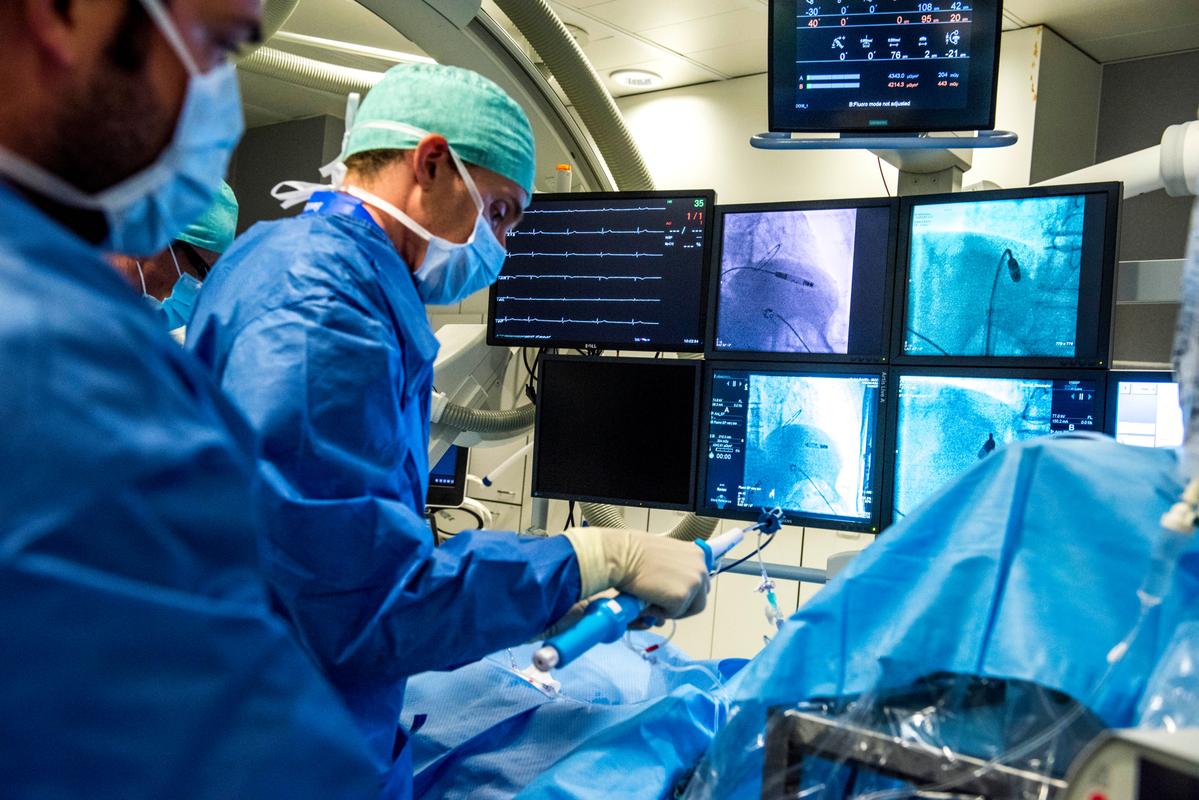Every year doctors at UZ Leuven implant about 400 pacemakers in patients with too slow heart rhythms. The majority of which is given a conventional pacemaker that is implanted under the skin with electrical wires to the heart. About 20 per cent of patients are eligible for a wireless alternative of the first generation: a mini pacemaker that is inserted directly in the heart. The procedure is less invasive and the number of complications reduced by up to half.
Dual heart chamber stimulation
The first generations of wireless mini pacemakers can only stimulate one room of the heart, which is sufficient for arrhythmia. But for patients that require stimulation of the whole heart (upper and lower chamber), do not qualify. They are given a conventional pacemaker.
Recently a new system was developed, consisting of 2 separate mini pacemakers that communicate with each other and that can simulaneously stimulate both chamber and antechamber of the heart. As a result a lot more people qualify: more than 80 per cent of patients needing a pacemaker.
International study in 464 patients
Between 2022 and 2023, the manufacturer of the new type conducted a large clinical trial to test the efficacy and safety in the first 464 patients worldwide. As a European reference centre for wireless pacing, UZ Leuven was selected as the only Belgian hospital to participate in the trial.
Last week the first Belgian patient outside the study received the new type of wireless mini pacemaker in Leuven. The patient is doing well.
The new generation of wireless pacemakers can almost completely replace conventional pacemakers and become standard treatment in the future. Prof. dr. Christophe Garweg
Prof. dr. Christophe Garweg
Prof. dr. Christophe Garweg, cardiologist at UZ Leuven: “The new system with dual chamber stimulation is an important breakthrough in this domain. The new generation of wireless pacemakers can almost completely replace conventional pacemakers and become the standard treatment of the future. As with the first wireless pacemakers we expect that in time these will also be reimbursed.”
More about wireless mini pacemakers
The conduction leads of a conventional pacemaker sometimes cause complications, such as infections. This is why international researchers and companies have been working on the development of wireless alternatives for several years, consisting of mini pacemakers with a mini battery that are implanted directly in the heart. As a European reference centre for wireless pacing, UZ Leuven is closely involved in these innovations. Read an overview of our previous press releases:
The new type of wireless mini pacemaker with dual chamber stimulation was developed by the company Abbott, that also sponsored the clinical trial. The first implants at UZ Leuven both in and outside of a study, were performed by a team led by prof. dr. Christophe Garweg and prof. dr. Rik Willems.
This article is part of the Annual report 2024
- First patient receives radiotherapy with innovative ‘RAD’ technique
- Single-arm surgical robot offers new possibilities for transoral surgery
- UZ Leuven prosa team celebrates 10 years of tailored care for children
